Here is an easy moong dal halwa recipe you can make from scratch without spending hours in the kitchen. Be sure to watch the video!
Estimated reading time: 4 minutes
Jump to:
What is ‘Moong Dal Halwa’?
Halwa is an Indian sweet dish. It is an eggless, purely vegetarian sweet pudding. The dish is inspired by the Persian dessert called halvah. There are a variety of halwa variants popular across the Indian subcontinent. Moong Dal halwa is one of them.
The two words that come to my mind while talking about dal halwa are – patience and practice.
It is one of those Indian desserts that require a lot of patience to make and a fair understanding of the cooking process.
My Dal Badam Halwa Recipe is perfect for home cooks to make a delicious bowl of dessert without sweating in the kitchen for hours or ending up with a sore arm.
- perfect dessert for festive occasions
- protein-rich and gluten-free
- no artificial colours/flavours
- easy-to-follow halwa recipe
- requires pantry staples
- meal prep friendly
Ingredients You’ll Need
A few Indian pantry staples required for the dal halwa recipe are:
- Dal: The yellow mung (moong) dal is the key ingredient. Use dry, uncooked moong dal for this halwa recipe.
- Ghee: It is the soul of moong dal halwa. The good fat of ghee balances the protein of lentils. There is no way to skim or skip ghee in the halwa recipe.
- Almond: It gives a nutty and delicious mouth feel to the halwa. Plus increases its protein value.
- Gram Flour and Semolina: One tablespoon of each gives a perfect texture to the halwa and makes it easy to roast the dal powder.
- A full-fat milk, preferably with cream (malai) is the ideal choice. While slow roasting, the full cream milk turns into khoya (mawa).
- Granulated white sugar to sweeten the halwa. The brown sugar or jaggery powder does not do justice to the dal halwa taste and texture.
- Saffron and Green Cardamom
There are two ways of making this moong dal halwa.
Method 1 – make a wet paste of dal
- My Verdict: I find this method a bit tedious, time taking, and tricky. The wet paste took one hour to reach the desired texture and colour before adding milk. Plus, continuously frying wet paste requires a lot of muscle power. Hence, I am not a big fan of spending nearly 2 hours in the kitchen for a single dessert bowl.
Method 2 – make a dry powder of dal
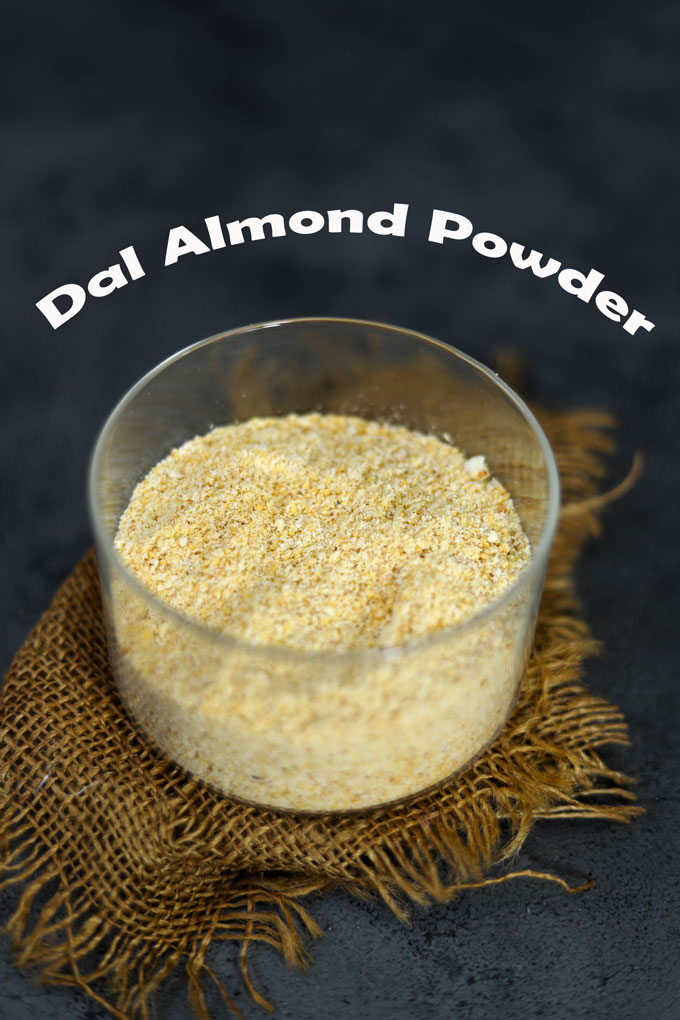
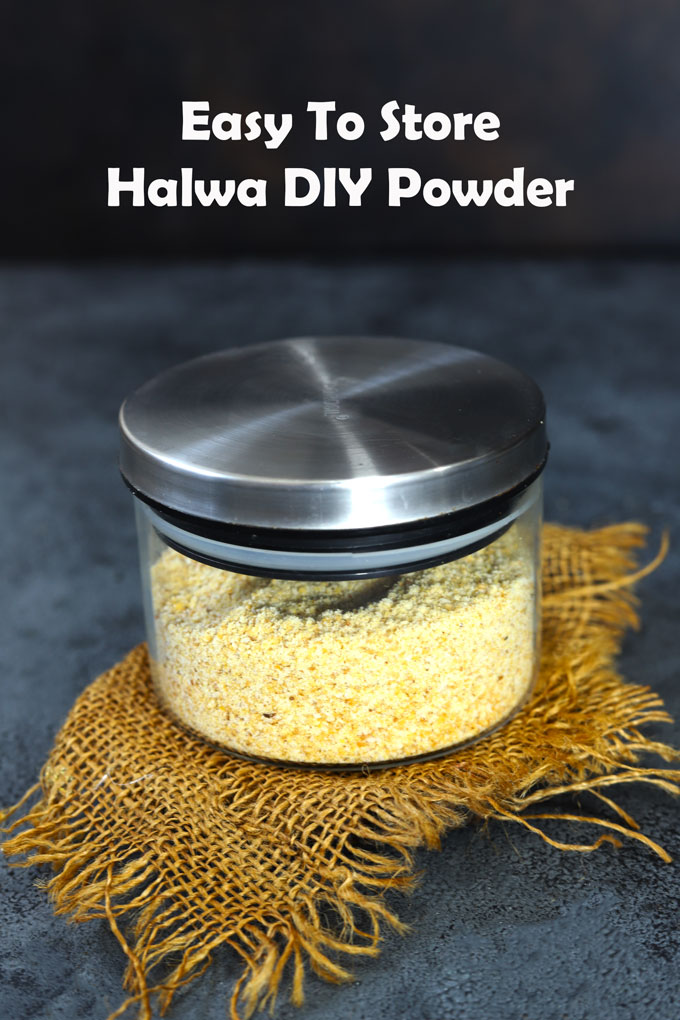
- My Verdict: This is my favourite way to make dal halwa. It requires less time and muscle power. The roasted dal powder is meal-prep friendly. You can store it for 1 – 2 weeks at room temperature. No need to start each time from scratch by soaking the dal and making a paste. Simply grab the dal powder and start making halwa.
Watch Dal Halwa Video
My Tried and True Tips
- Be Patient: Moong Dal Halwa is a labour of love and patience. Be patient while dry roasting the dal until it gets a light brown colour. Similarly, fry the halwa till the ghee starts oozing from the sides.
- Add Ghee in Batches: Moong Dal absorbs a lot of ghee. Hence, while making halwa, the ghee is added in different phases of the cooking process. Add the first batch in phase 1. The second batch is added in small quantities throughout the process till the halwa is ready.
- Full Fat Milk: Avoid using skimmed or toned milk for making dal badam halwa. Many dal halwa recipes use khoya (mawa) instead of milk.
- Tested Signals: The best signal of halwa being ready is the ghee oozing from the corners of the halwa after adding sugar. The moong dal halwa always has a fat-dripping, moist surface. It is never dry or hard.
More Indian Halwa Recipes
follow us on Youtube and Instagram for video recipes.
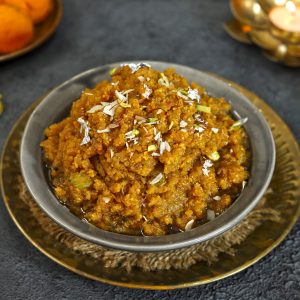
Moong Dal Halwa Recipe
- Blender
- Heavy Bottom Kadhai
Ingredients
- 1 Cup yellow moong dal (mung bean)
- ¼ Cup almonds
- ½ Cup ghee
- 1 tablespoon gram flour (besan)
- 1 tablespoon semolina (rava/suji)
- 2 Cup full fat milk clarified butter
- ½ teaspoon saffron (kesar)
- 1 teaspoon green cardamom powder
- ⅓ Cup granulated white sugar
- 2 tablesponn almonds + pistachio, sliced
Instructions
- Rinse moong dal until water runs clear. Soak for 1 hour.
- After 1 hour, drain all the water from the dal. Transfer it to a colander to drain all the liquid. Spread it in a single layer on a baking tray lined with a kitchen towel. Put this tray under the fan or sun for 10 – 15 minutes for dal to dry completely.
- Once dal is dry to touch, transfer it to a wide pan. Dry roast over low to medium heat till it is light brown in color (refer to image/video). Keep stirring while roasting. Transfer to a blender. In the same pan, dry roast the ¼ cup almonds for 2 – 3 minutes. Transfer to the same blender as dal.
- Grind roasted dal and almonds to a slightly coarse powder. Transfer to an airtight container to store or use immediately.
- Next, soak saffron and cardamom powder in hot milk. Stir, and keep aside until ready to use.
- To make halwa, heat ¼ cup of ghee in a heavy bottom wide pan/kadhai/casserole
- Add gram flour, semolina, and roast for 2 – 3 minutes or till a sweet, nutty aroma is released.
- Next, add dal badam powder. Mix nicely with ghee. Start roasting it over low to medium flame. After 5 minutes, it starts oozing ghee in the pan and turns deep brown in color. That is your cue to add milk.
- Add in saffron infused milk, and 1 tablespoon of ghee. Continuously stir the halwa to avoid any lump formation and to make sure milk is absorbed by the dal paste. If there is spluttering and bubbling, cover the pan with a lid. Keep it that way for 1 – 2 minutes or till bubbling is settled.
- Once the milk is absorbed by the halwa, add the leftover ghee, and the sliced nuts. Continuously stir and roast the halwa till ghee starts oozing from the sides. This is the signal that moong dal halwa is ready.
- Garnish moong dal halwa with sliced almonds, pistachio, saffron, and edible silver leaf. Serve warm.
Recipe Notes:
- Divide the ghee into two equal portions to be used at two different stages of cooking halwa.
- Combine hot milk, saffron, and cardamom powder. Do this step at the beginning itself so that the color of saffron is combined with the milk.
- Use fine rava (chiroti rava) and gram flour for this halwa. If you want to keep it gluten-free, skip adding semolina.
- ⅓ – ½ Cup of white sugar is enough for dal halwa. It’s best to taste after adding sugar and if required, add more.
- Use a combination of sliced almonds and pistachio for garnishing the dal halwa. If you prefer, you can ghee roast the nut as well before slicing and adding to the ghee.
- The moong dal halwa tastes best warm straight out of the pan. It remains fresh at room temperature for 4 – 5 hours. Store the leftover in an airtight container in the refrigerator for 1 week. Reheat in a microwave for 5 minutes. This helps melt the solidified ghee. Or you can reheat in a pan with a few full-fat milk or water splashes.

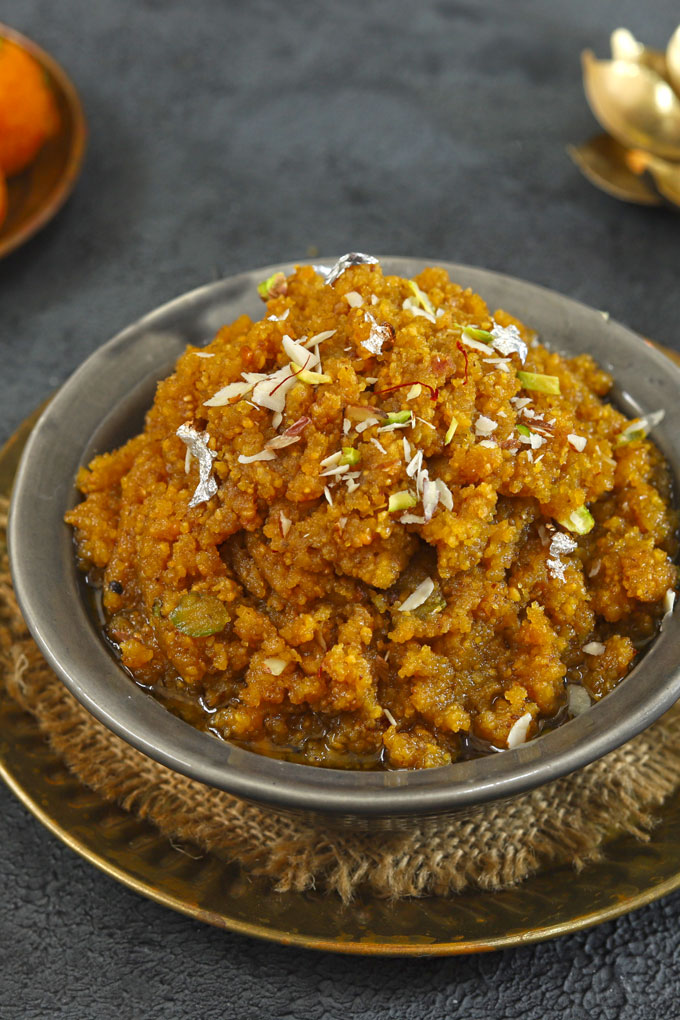
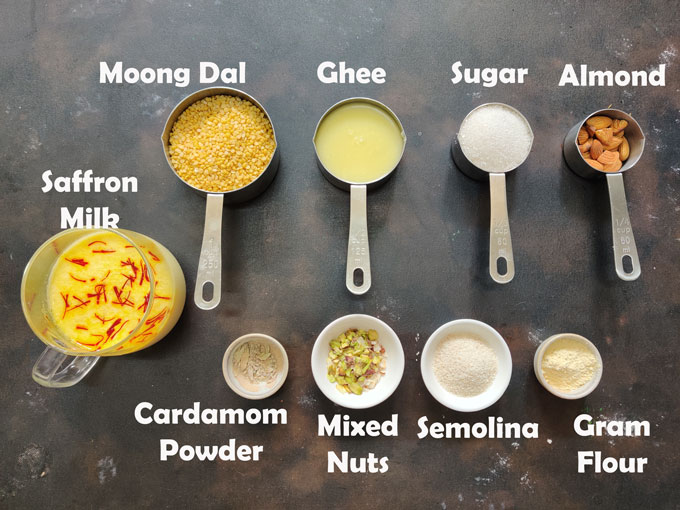
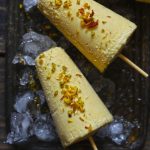
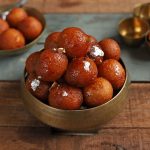
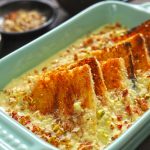
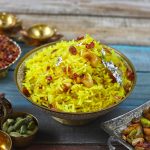
Manini says
Awesome…thanks for the recipe..even i am planning to make some this diwali…
maya says
This sounds so good. Especially since the sugar is not too much. Will definitely be making this, thanks for the recipe, Hina!
FunFoodand Frolic says
Maya, I make it only once in a year due to time involved in roasting moong dal paste. But it’s my all time favorite dessert.